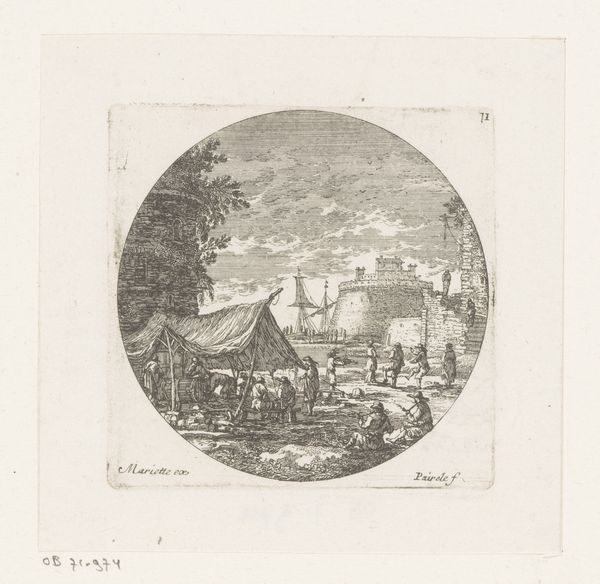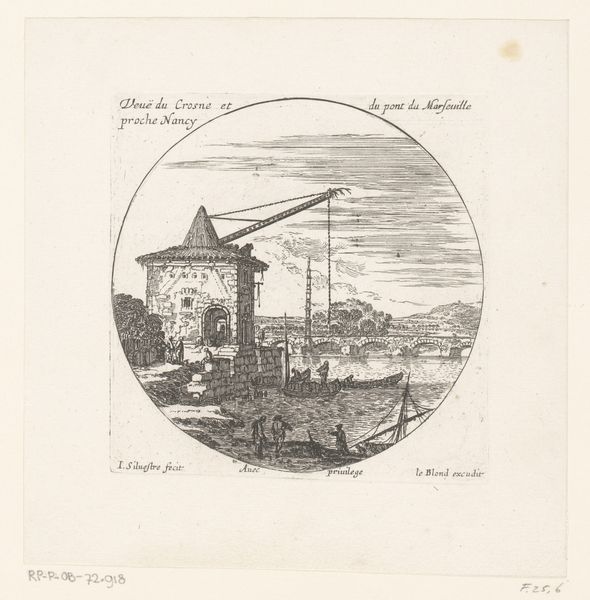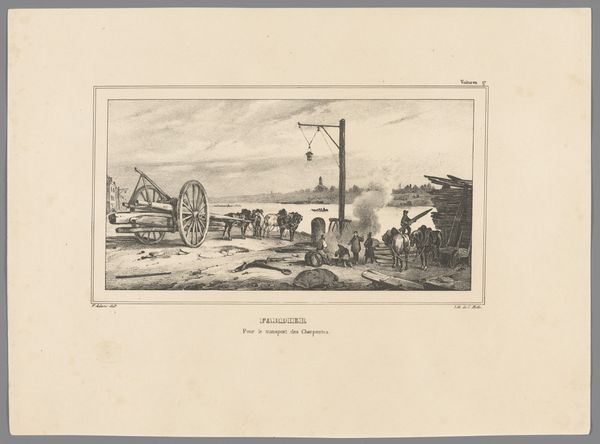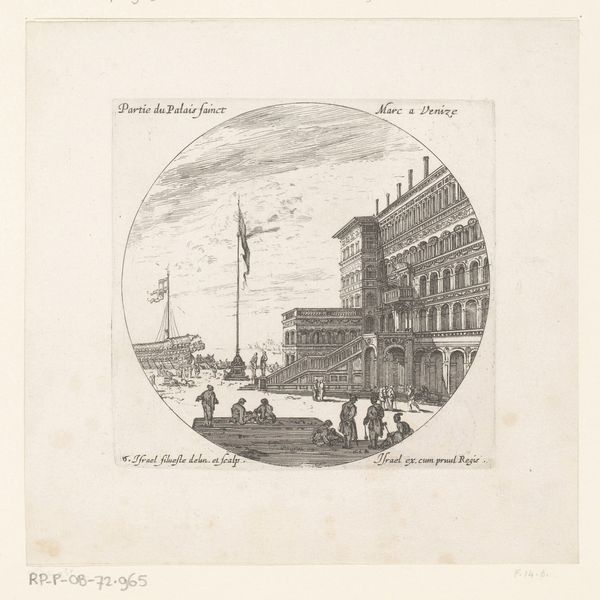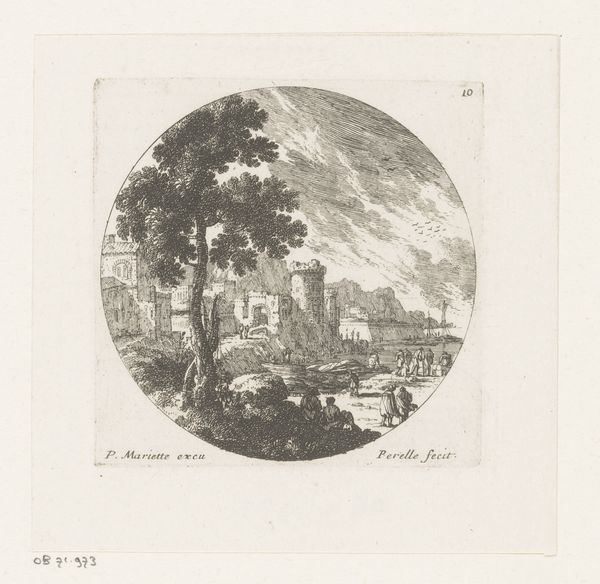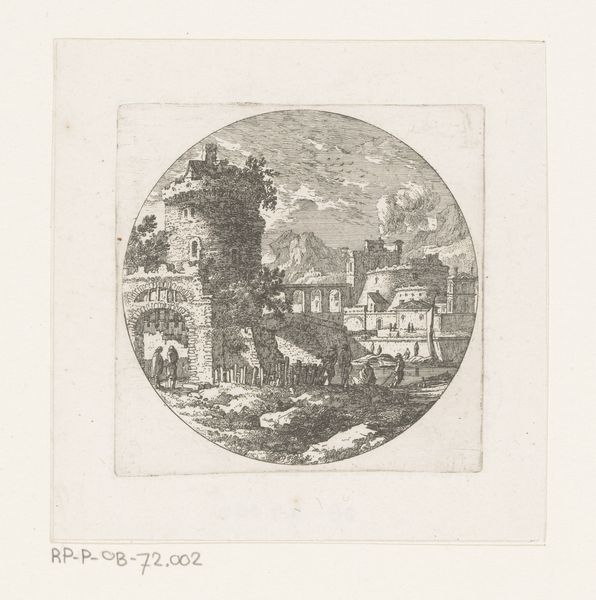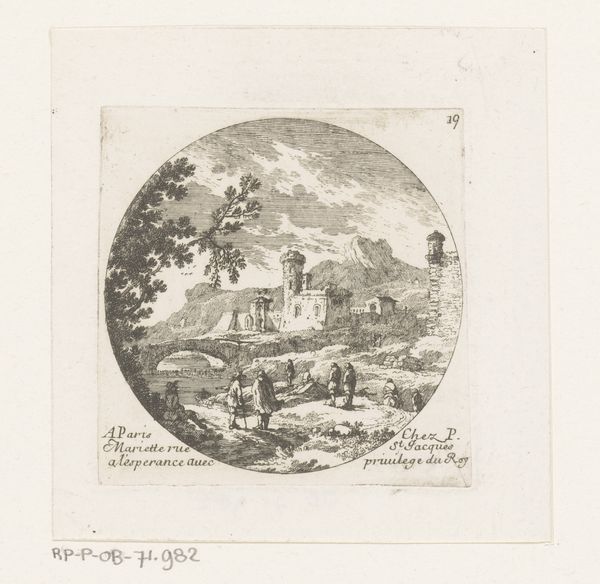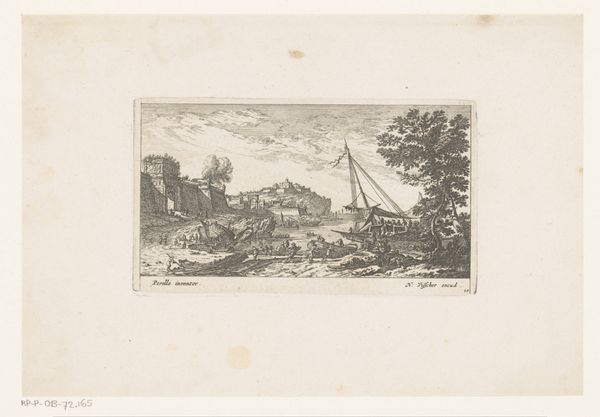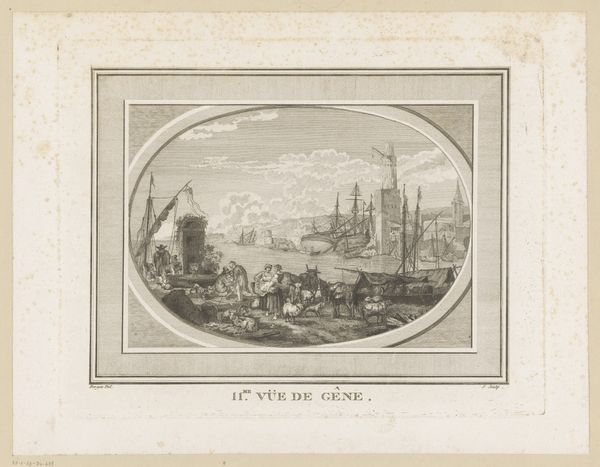
print, engraving
#
baroque
# print
#
old engraving style
#
landscape
#
cityscape
#
engraving
Dimensions: height 101 mm, width 96 mm
Copyright: Rijks Museum: Open Domain
Curator: Nicolas Perelle's "Figuren bij crucifix in dorp", an engraving dating sometime between 1613 and 1695, presents us with a compelling cityscape. What is your initial take on the piece? Editor: Immediately, I'm struck by its somber, almost desolate mood. The limited tonal range of the engraving emphasizes the stark contrast between light and shadow, enhancing the scene's gravitas. The circular border focuses attention but feels almost like we're peering through a lens at a bygone era. Curator: The circular format you noted immediately establishes a structural boundary that foregrounds a central monument: a towering, moss-covered crucifix that dominates the foreground. The meticulous line work creates a tangible sense of depth, particularly in rendering the receding architectural forms. Editor: But consider this crucifix not merely as a formal element. As a symbol of faith and authority, in a European landscape no less, this would have complex socio-political implications, and this village seems dwarfed by it. It reflects a historical moment, maybe the tension between religious dogma and daily life in these tiny figures around its base. Curator: True, the interplay between the cross, architecture and small scale human forms creates visual interest. However, consider how Perelle uses engraving techniques. He creates textures, particularly in the sky with dense lines, and the detailed foliage. It draws the viewer's eye into a meticulous study of technique and materials. Editor: Technique is never neutral! It informs perspective and it carries a point of view. Those architectural forms and their careful renderings may reinforce hierarchical societal structures and reflect on how power shaped perceptions of urban environments. The scale reinforces this; we're peering down on them. Curator: I would suggest we refrain from applying our contemporary values. Instead, allow the precision of the engraving, its detailed linearity, to guide you to a deeper appreciation of the formal elements within the work itself, separate from imposing broader societal interpretations. Editor: Perhaps the real insight here comes from holding both views at once, honoring Perelle's artistry and reflecting on the society that produced the art. It is about understanding the multifaceted relationships between art, artist and sociohistorical context. Curator: Yes, perhaps acknowledging these differences gives us each a way into different appreciation.
Comments
No comments
Be the first to comment and join the conversation on the ultimate creative platform.
